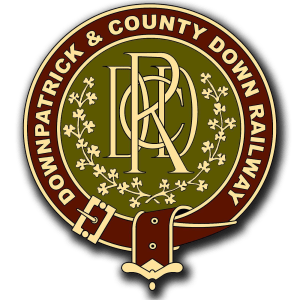| At a glance: | |
|---|---|
| Builder: | Deutz (Cologne, West Germany) |
| Build date: | 1962 |
| Original company: | Córas Iompair Éireann |
| Withdrawal date: | 1983 |
| Final company: | Cómhlucht Siúicre Eireann, Teoranta |
| Arrived at DCDR: | 1995 |
| Current status: | Operational |
| Current owner: | ITG |
G617 is one of the five diesel locomotives at Downpatrick owned by our good friends, the Irish Traction Group. Built by Deutz of Cologne, West Germany in 1962 for CIÉ, the G Class to which G617 belongs was intended for light branch line work and shunting- with that in mind it isn’t hard to work out why three of them ended up at DCDR!
G617, as well as its sisters, were used all over Ireland from Dublin to Tralee, whether it was shunting any of the former’s large yards or working goods trains between the latter and Fenit. Perhaps most famously, they worked the Loughrea branch in Co. Galway, usually hauling a single carriage and a few goods wagons from the town to the mainline at Attymon Junction.
G617 was officially withdrawn by CIÉ on 14th November 1977, but it passed hands into Cómhlucht Siúicre Eireann, the state-owned Irish Sugar Company. Rehomed at Thurles sugar factory, G617 was used to shunt wagons of sugarbeet until the factory closed its rail yard in early 1980s. It was then purchased by the ill-fated Great Southern Railway Preservation Society and moved to Mallow, where it remained until 1990 when it was acquired by the Deutz Operating Group along with its sister G616.
The Deutz Operating Group was effectively a front organisation for the Irish Traction Group, being led by four of its committee members. G617, and sister G616, were officially transferred into ITG ownership following the securing of their Carrick-on-Suir based in 1993 and work was soon commenced on their restoration. Starting for the first time in preservation in 1994 and seeing some use for short cab rides, G617 was then sent to Downpatrick the following year on long term loan.
G617 was quick to prove its worth at DCDR, being ideal for most of our needs. It received an overhaul during 2007-8, which included painting it into its current plain black livery and the addition of LED marker lights. Today it makes frequent appearances on shunts, but having achieved somewhat of a ‘pet’ status among our loco crews it usually gets a look-in on diesel days as well.
